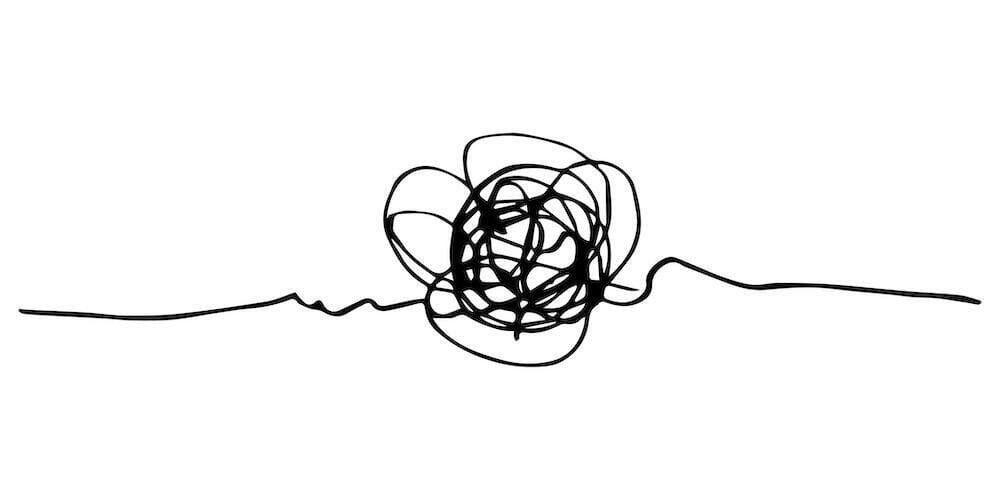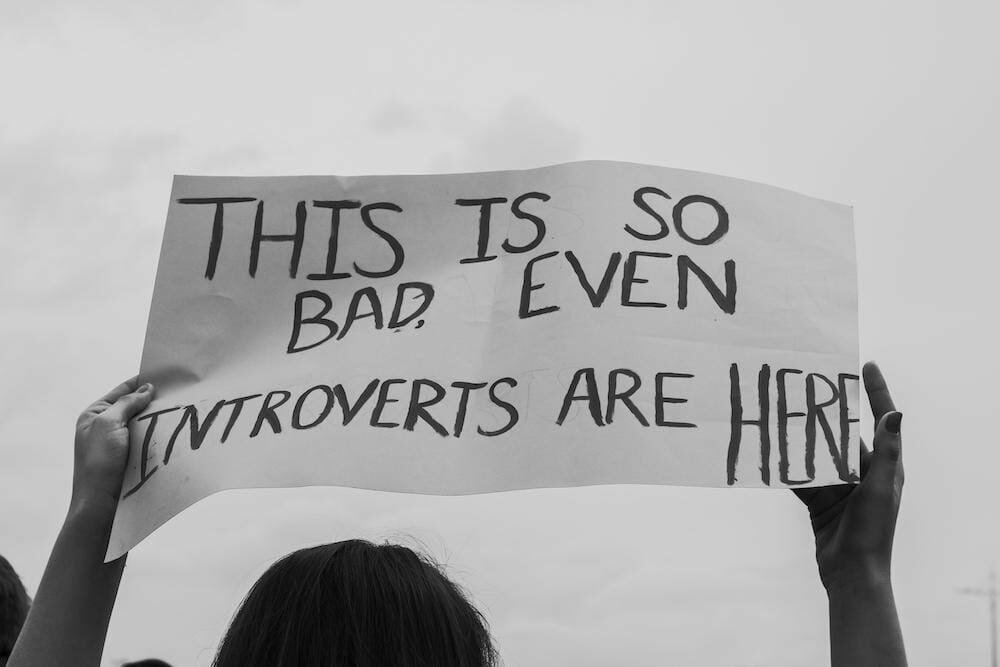There are some questions about the practice of “ethical product development” that I’m asked all the time from folks actively working on products. For example, how do you define an “ethical” product? Or who should lead ethical product development? And, can you really make a difference from inside an organisation?
Below, I answer the eight questions I'm most frequently asked. At the end of the post, you'll discover a number of ways to join this important discussion and learn more. I'd love to know your thoughts!
Firstly, let me tell you how I got here.
An Absence of Practical Guidance
Like any self-respecting product manager, I’ve always regarded technology as a perpetual work-in-progress with lots of room to improve. I would characterize most of these opportunities for improvement as minor shortcomings or inconveniences. A few I would characterize as seriously harmful, perhaps even in direct opposition to the very ideals that the technology has been designed to support.
Over the last 20 years, I’ve been constantly on the lookout for practical guidance on how to improve specific technology and the process by which we produce and deliver it.
In 2019, over a six-month period, I read the freshest tradecraft and reread nearly everything I had encountered during my career to date. I came to a startling realization: the abundance of guidance in many areas of product development revealed an almost total absence of practical guidance on how to make ethical choices more reliably across the software development process. Lots of polemics, but very little usable advice. So, I decided to assemble the best available recommendations alongside my own observations into a short playbook, published in August 2020, called Ethical Product Development: Practical Techniques to Apply Across the Product Development Life Cycle.
In the book I recommend that product leaders inside companies coalesce on principles – Product Code(s) of Ethics – to guide their decision-making. Then, they need to bring those principles to life by identifying Principle Champions: people who hold the organization accountable by working with teams to audit the company’s portfolio of offerings against the principles. Starting with identifying and correcting what they consider the worst precedent, teams then need to incorporate ethical decision-making practices into every stage of the product development process. Lastly, I offer suggestions on how individuals can stay personally committed to this challenging work.
My wish for the book is that product development teams use it to become more committed to developing ethical and inclusive products, instead of leaving something so critical to chance. My goal is that it should serve as a reference to remind product people how to apply techniques that other teams have used successfully. That is why I’ve numbered the techniques carefully (there are 20 in the book) and outlined Resources to Consult and Examples in Practice in a public notebook to introduce fresh examples over time.
Finally, I want product developers who use the book – which takes less than two hours to read – to introduce it to colleagues as a constructive way to begin revisiting prior product decisions that have caused harm or commit to making new decisions that maximize positive social impact.
I have not been disappointed by how the book has been used thus far. Teams around the world have appreciated the practical approach – especially its brevity – to give readers tools to incorporate ethical decision-making into their day-to-day activities.
8 Common Questions on Product Ethics
In the months since the book was published, I have had a chance to discuss the practices with product people in a variety of organizations. These are their top questions.
1. How do you Define an Ethical Product?
- How do you define an ethical product?
- Why do you use that word “ethics”?
- How should my product team decide what is ethical?
My definition for an ethical product is one that – at a minimum – strives to avoid avoidable harms and maximize its positive social impact. It is the product of a process that specifically embraces ethical decision-making every step of the way, starting with a set of principles. I refer to “ethics” because there should be deliberate decision-making based on a set of consciously derived principles. The field of ethics long predates the rise of information technologies, and provides a sound approach to reasoning.
That said, several other descriptors for this work can do the job well, especially if they are more palatable than the word “ethical” in your local environment: responsible, intentional, humane, mindful, even morally imaginative seem to work. More pointedly, inclusive, accessible, and fair can also be effective depending on your product and its goals.
On the question of how and who to decide what is ethical, this is outlined in the book. See Question 3 below for more specifics.
2. How do I use Predefined Principles?
You argue hard for starting with a set of principles, as opposed to addressing items “opportunistically.” Our team/company has drafted these Principles. What now? How do we use them?
I have argued hard for articulating principles, aka a Product Code of Ethics (PCOE). “Opportunistically” aka “when we get around to it” does not seem to work. Throughout my research, the companies that have been able to “stick with” building products ethically over time have that north star, usually codified. The principles serve as a navigation device to help organizations make many decisions about how to build and evolve products.
Developing your product without a PCOE is like developing it without a product strategy: if you don’t know where you are going from an ethics standpoint, how do you get there effectively, and, even more importantly, avoid getting totally lost?

I cover the question of what to do to ensure that the PCOE does not just sit on a shelf in Chapter 2 of the book. It describes the work of Principle Champions, those people who can create community and follow practices to uphold the evolving principles:
- Develop a risk-zone framework, related to each principle
- Audit the product by principle
- Source and deploy principle specific expert training
- Learn how to discuss ethical options when making product decisions
- Help colleagues use the principles early and often
- Refresh the principles
Since publishing the book and engaging with more teams, it appears essential to parallel-track the audit (the second activity) with drafting the principles. As teams finalize their principles, they find it useful to share specific examples of product features, language, and policies that violate the principle – if those exist. Additionally, including proposed projects to “live up to” the principle clarifies its purpose. As one practitioner put it, it’s helpful to illustrate the path from “the A state” to “the B state”: we want to go from this problematic situation to this less problematic future.

3. How do I Improve the Process of Ethics-Related Decision Making?
Making “ethics-related” decisions with my team is very hard! What’s the balance between “no deliberation” and “endless deliberation”?
My own experience and that of my peers at other companies indicates that a team’s ability to make decisions and move forward in this domain reflects the team’s dialogue and decision-making culture in general. If the team has practices around sharing information, productive dialogue, and clarifying the process by which decisions will be made and revisited, then that decision-making culture will serve them well.
If the organization’s decision-making muscles are shaky, I advise practitioners to persevere. It’s worth specifically examining the decision-making processes at play to shore up their weaknesses: Is there lack of clarity in the problem the team aims to solve? Have probable root causes been identified? Have we rushed to solutions? Have we pre-committed to one solution, hastily? As with any strength training program, you should try to rack up some smaller wins in making new decisions with a fresh process and gradually build from there – lest you injure yourself and/or give up entirely.
a) How do I contend with politics, political ideologies, and/or identity politics?
People can and will disagree about ethical options because our values vary. The work here hinges on learning how to generate and discuss ethical options when making product and product-related policy decisions. Passion for the principle(s) is an important quality for each champion to have, but perhaps more important is their ability to engage in productive dialogue with people with a different viewpoint.

I recommend that colleagues undertake some form of contemporary open-mindedness training to elicit good questions about the different perspectives that people bring to the table. I recommend OpenMind, an interactive platform launched by Jonathan Haidt, business ethics professor at NYU and Adam Grant’s new book Think Again: The Power of Knowing What You Don’t Know. Remember the goal is to go from the problematic A state to the less problematic B state.
b) How do we trade-off this work against other work?
One of the most important roles a product manager can play is to lead teams through a process of trade-offs, identifying how to create the most value per unit of effort. One of the core challenges around making the case to address “ethical debt” or do a project to uphold a specific principle, such as “use inclusive language,” is the difficulty of measuring its value. Often, it’s tough to quantify how well the application satisfies existing customers, attracts new ones, or advances the organization’s interests in remaining a going concern.
My strong suggestion is to incorporate the proposed work into your existing and evolving prioritization approach. For many teams, these include a voting system, and/or designated “line items” that you protect (such as those that enable you to meet regulatory compliance thresholds or address technical debt), and/or a formula that you apply to rank projects. From there, decisions can and should be revisited like other hypotheses that are tested through experimentation.
4. Who's in Charge of Ethical Product Development?
- Do I need a Chief Ethics Officer?
- Do I need executives to support Ethical Product Development?
- Which executives do I need?
- How should I enroll them?
Do you need a Chief Ethics Officer? Maybe, maybe not – I happen to think it would be helpful – but you certainly need some executive support. Product leaders who ask questions about executive support typically are not the organization’s most senior executives. They either find themselves bringing in the practice of ethical product development to their organization for the first time, are themselves a leader of part of the product portfolio and wonder how to further operationalize the work across the company, and/or have previously tried to visit “ethical shortcomings” and faced some executive resistance, sometimes because a project was at odds with a profit motive, but usually because of inertia or confusion about who really ought to do this work and how to do it.
My answer is directed at this audience of product leaders. You need executives who will champion the principles, mentor team members through the challenges of ethical product development, and at times, play a “challenger” role, pushing teams to overcome challenges. You need executive leaders who can quickly assimilate new information and help teams to make decisions to move forward, if not with consensus, with enough integrity in the process that teams will want to continue to engage in it.
In practice, you need much more championing and mentorship than challenge-raising, from your executives, as the work itself raises a myriad of difficulties:
- What if the “fix” costs more than we can spend right now?
- What other downstream consequences will we have by embracing this approach vs. another?
- What if this update only “benefits” a few and “alienates” many?
- What if this work has been on our list for years and continues to fall just “below the line” every time?
In encountering questions like these, across the board, product people have commented that timing is everything. The year of 2020 certainly brought new challenges and new opportunities for more ethical product development. Moral reckoning with systemic racism, protecting user privacy, or establishing content standards, all served as a clarion call-to-action for corporate executives. On the other end of the spectrum, keeping the product up-and-running took precedence over any other considerations. Based on all of this, executives in several companies have shared this advice – start somewhere, even if you have limited executive support for the time being. How?
Clarify a Short List of Example Projects
These example projects should be ones that product teams could theoretically undertake this year, that map to high-level principles that they support. Do one or two projects that have outsized value per unit effort to demonstrate the possibility and value and to gather momentum to do more. Given this advice, for readers who find themselves here, I would recommend reading Chapters 3 and 4 of my book, whereby a team could identify a project or two and execute on it through the stages of product development and “report out” on the experiment they have undertaken.
Build a Product Ethics Discussion Group
A Product Ethics discussion group as well as a broader community, however informal, will enable you to “get smarter” as an organization on the specifics. Try to connect initiatives wherever possible within the product portfolio and with other functions at the organization (e.g. the compliance / legal functions, the marketing / public relations functions, or corporate social responsibility programs, if those are available). Executive support will likely follow.
5. What About Diversity, Equity, and Inclusion?
How does ethical product development relate to Diversity, Equity, and Inclusion (DEI) work?
I believe that this work goes hand-in-hand with DEI. The overlap can be quite large for three reasons:
- Specific ethical shortcomings, ranging from biased AI to “social features” without guardrails, very often have disproportionate impact on marginalized groups.
- Much of the technology sector does not reflect the demographics of users and broader society.
- Purchasers/users – whether they are businesses themselves or consumers – are placing more pressure on companies to promote DEI in everything they do, including in how they produce software. So are investors.
I encourage teams working on ethical product development and DEI to collaborate where appropriate, but not to collapse the two areas since they may have several additional objectives on either side. Equally important, in the last year, I have heard from peers, especially people of color and marginalized groups in a large variety of organizations, that they risk burning out in their day-to-day work and their work on DEI, however formally or informally they are invited to contribute to DEI. So, my suggestion is to approach the overlaps intentionally and with sensitivity, leveraging “allies” as much as possible.
6. Can you Make Real Change From the Inside?
Can you make real change when an aspect of your business model correlates with harm produced, e.g. an advertising-supported business model?
Yes. As a product leader, close to the intersection of the product experience, the technology, and the business environment, you possess unique knowledge that others will not readily have. You can think creatively about alternatives and/or discontinue aspects of the offering that violate your team’s Product Code of Ethics. Whether and from what vantage point you want to contribute is a deeply personal inquiry.
7. Who Is a Leader in This Domain of Ethical Product Development?
Which companies or individuals or actions would you hold up as “best practice”?
This question is a trap! If I answer Google or Jack Dorsey I would surely lose credibility with some of you. Or, if we talked longer, you might agree that actions taken by these companies demonstrate some leadership but that it is inconsistent and often quite late in the game. You might also point out that companies like Google or Twitter cannot afford not to invest here and not to publicize what they do.
If I pointed at Dell, HP, Intel, IBM, LinkedIn, Microsoft or even all the 132 companies appearing on TechRepublic's list of 2020's most ethical tech companies, you might say: of course, these companies have deep-ish pockets to stick with these activities and market their wins.
If I told you about wins from companies you have never heard of who have avoided ethical lapses that they were on track to make or who are having an extremely positive impact, you might wonder whether ethical product development activities are curbing their scale. And–to come full circle – you might rather hear about Google!

If I told you about a very specific set of adjustments that companies sought to make this summer, replacing racially insensitive terms like “master/slave” “whitelist/blacklist” in their technology environment, you may think “too little, too late, we did this in 2014”. Or you may be very deeply involved in an effort like this and hear from engineers, including engineers of color, that they would rather take other actions, such as investing in DEI or making a corporate donation to Black Lives Matter than updating code that – if not done with precision – will cause significant technical problems.
My point is that no company, individual or set of activities, provides a clear-cut example of “best practice”. But it behooves us all to learn from others’ “better practice” and apply what we can to our own work.
8. Does Marketing Ethical Product Development Cheapen It?
Is it okay to celebrate wins publicly, even if they are small? I’m worried about “ethics-washing”; how do I avoid it?
I think it’s really important and useful to share our work, whether that work involves harms we caused and corrected, harms we avoided, or ways in which we – in our opinion – have increased our positive social impact. I consider every case study a gift, a learning opportunity to gain some wisdom without having to go through that unique experiment firsthand. The case study is a great boon in this challenging work, regardless of the company’s incentive to share it, whether that incentive is to look good or – often – less bad.
Even sharing work internally is hugely helpful to your product team. In my book, I encourage product managers to write an internal press release (a technique borrowed from Amazon) to get the benefits of what is known in ethics as the Sunlight Test: Would I do the same thing if I knew my decisions would end up in the news?
My main recommendation to teams engaged in ethical product development is to tell their story with accuracy so that real learning can occur. Give credit where credit is due by acknowledging how non-users, users, or colleagues who had been clamoring for change finally broke through. Call out new developments that made it more feasible to tackle a thorny issue and recognize events in the company or world that catalyzed action. If personal learning by a company exec is a true story, run with it, authenticity is appreciated.
As for “ethics washing,” people point out that the tech sector uses ethical product development to tout the benefits of industry self-regulation, implying that government regulation isn’t needed. For the record, my take is that industry self-regulation is not sufficient. I hope that the months and years ahead bring forth a well-designed regulatory approach to several specific aspects of technology development.
In the meantime – and beyond – because innovation outpaces regulation, I think it’s critical for product people to pursue ethical product development. We can avoid “ethics washing” by providing a clear statement on the relationship between existing legal or regulatory frameworks and the commitments we make in our PCOE. The optimist in me believes we can often do more than the minimum that the law requires, that we can strive to avoid avoidable harms and we can amplify our positive social impact.
Join the Ethics Discussion
For us to continue our learning, it's important to keep the conversation going and to share what we know. Here are a few ways to learn more and get involved.
Share Your Thoughts Like Pavani
We welcome guest submissions at Mind the Product, especially those on important topics like Product Ethics. If you have a post to share, feel free to get in touch. Email the team at editor@mindtheproduct.com.
Watch Our Product Ethics Panel
Mind the Product members can watch our panel, How To Prioritise Ethical Practice as a Product Manager featuring Cennydd Bowles, Kathy Pham, Pavani Reddy, and Martin Eriksson in an in-depth discussion about Product ethics. Watch now
Become a Mind the Product Member today and access the recording.
Start a Discussion in the Community
Share what questions you're most often asked, or perhaps pose the questions you have. You can use the social media buttons below 👇







